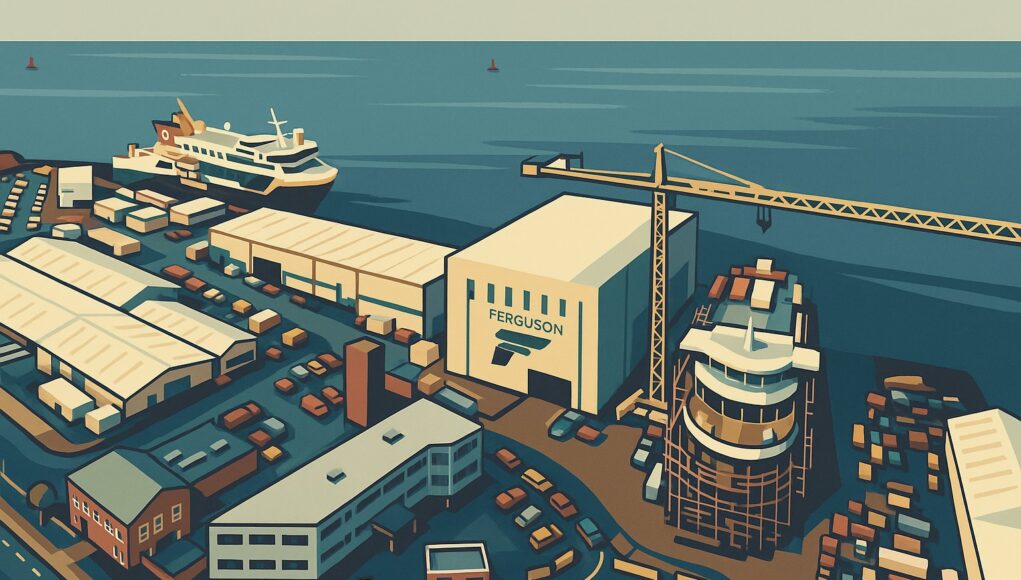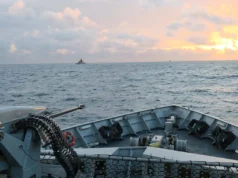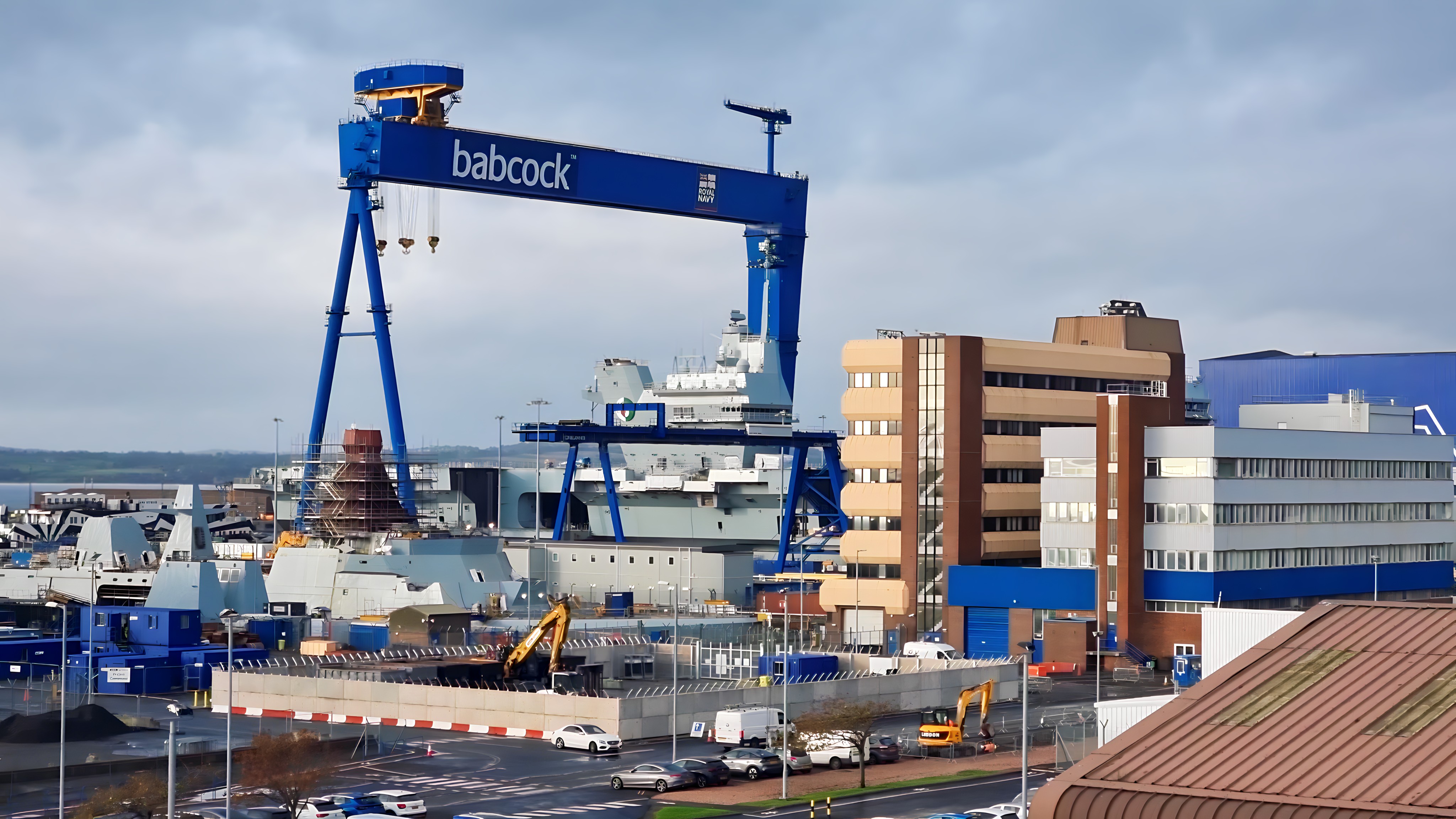When Graeme Thomson explains why he took the Ferguson Marine job, he starts with his working life rather than the state of the yard.
He has been in shipbuilding since 1983 and mentions the span of those four decades almost reflexively. “I have worked in shipbuilding from apprentice to CEO,” he said. “From concept to delivery and handover.”
That long view is how he approaches a yard that has spent years in the political spotlight. He had watched the situation from afar and had formed a blunt impression. The failures were obvious, but the narrative around the yard struck him as distorted. “I had a lot more sympathy for the team that was here,” he said. “What was trying to get achieved wasn’t properly reflected.”
The turning point came when he visited the site and spoke to staff. Something about the place convinced him it was not finished as a shipyard. “I came and met a number of people,” he said. “I could see the journey it could go on. I could see the opportunity. I could see the passion people have to get back to where they believe they were before the challenges in 2014 and 2019.”
Thomson is a late career operator who thinks the yard has a future worth attempting but only if experience counts for something.
He saw it as a late-career opportunity to use experience accumulated across several yards, including overseas. “I have seen the journey many shipyards have been on, including in Canada, modernising and developing to be modern yards,” he said. “Bringing that experience here at this point in my career felt a grand opportunity. I have four or five years before I retire and a lot to contribute.”
His diagnosis of the yard and the first steps he took
What he encountered on arrival was not a technical problem first but a psychological one. The yard had absorbed a decade of criticism and drift. “There has been a cultural shift brought on by the challenge that has been put at Ferguson’s,” he said. “When people say poor things about the business, you tend to believe that.” He described the early priority as giving people back the sense that they could do the job.
“Trust your skills, have confidence in what you have done before,” he said. He also saw a second issue: “learned helplessness,” his phrase for the risk that a workforce begins to assume failure is inevitable.
His first major act as CEO was a difficult announcement on schedule and cost. He told the workforce the real test would come afterwards. “Our success will be whether we can then deliver to that and reinforce that there is a better future and that Ferguson is capable of creating that future.” From that point he focused on clarity of responsibility and the basics of disciplined programme control. “Some processes had fallen by the wayside as people had been in this fight for so long,” he said. “We have put in a robust plan, progress metrics, and the ability to be innovative and solve problems instead of upward delegation or hesitation.”
He treats Glen Rosa as a demonstration project for how the yard should operate more broadly. “We are doing this because it benefits Glen Rosa, but also because it will benefit the long term future of Ferguson’s,” he said. What he wants is a management system that provides reliable information and a culture that allows decisions to be made at the right level without fear of blame.
Some of the perspective he brings comes from his time working for primes. The discipline expected in major naval programmes appears to be something he wants ingrained here. “Having worked for BAE Systems many years, I know the need for good, robust project management,” he said. “You see the effect on the product when it is done properly.” He repeatedly described Ferguson Marine as a yard that can regain credibility but only if this kind of discipline becomes habitual.
The future he describes for the yard
Thomson returned several times to the idea of potential rather than present reality. He believes the yard has the ingredients for recovery but not yet the rhythm or the pipeline that would make confidence self sustaining. He said several times that the yard is close to a turning point but not past it. “There is enthusiasm, there is potential for a great future,” he said. The other side of that, for now, is the uncertainty caused by the lack of secured follow-on work.
“We are delivering Glen Rosa to quarter two twenty six and we hope to secure more, but it is not there today,” he said. He expects the mood to shift if the pipeline firms up early next year. “By February or March I hope to give only one side of the coin that we have future work and investment flowing. We are not quite there yet.”
He described how he wants the yard to look in the middle of the decade. “People should come and experience a modern, efficient, clean yard,” he said. “A yard trusted in its ability to deliver to cost and budget.” He wants Ferguson Marine to have a recognised niche that complements, rather than competes with, the major players. “We can step in and support defence industries doing larger ships and take on whole ship work ourselves efficiently,” he said.
He also sees a rare chance to adopt technologies fresh rather than layering them on top of legacy systems. “We have a great opportunity to do the next consideration of what a digital shipyard is,” he said. He has already asked universities to help translate wider talk of AI and data systems into something practical. “We should be using technology not seen in our shipyards just now, because the window to do that is now,” he said.
His summary of Ferguson Marine’s position within the wider UK system is simple. He sees it as part of a larger fabric rather than a would-be prime. “You have six or seven major yards across the UK. We want Ferguson’s in there, part of that infrastructure,” he said. He finished by stressing that reputation will only be rebuilt through delivery. “We have had a bad game. Some of the players have changed, we have changed the management, and we are making investment. Now we want the opportunity to demonstrate what we can do.”
Thomson, in my view, speaks like someone who has watched yards rise, falter and recover across a long career. His view is that a shipyard is rebuilt from the inside long before the outside world notices. He is trying to replace fatigue with purpose and restore confidence in skills that have been tested hard by years of pressure. The work ahead is slower than the headlines that shaped the past decade, but he argues that steady discipline, held over time, is what will change the story.
Tomorrow, we look at how Thomson’s ambitions translate into the day to day reality on the ground, examining the systems he is trying to rebuild, the cultural shifts he is pushing for and the operational habits he believes will determine whether the yard can convert this moment of opportunity into a lasting recovery.













